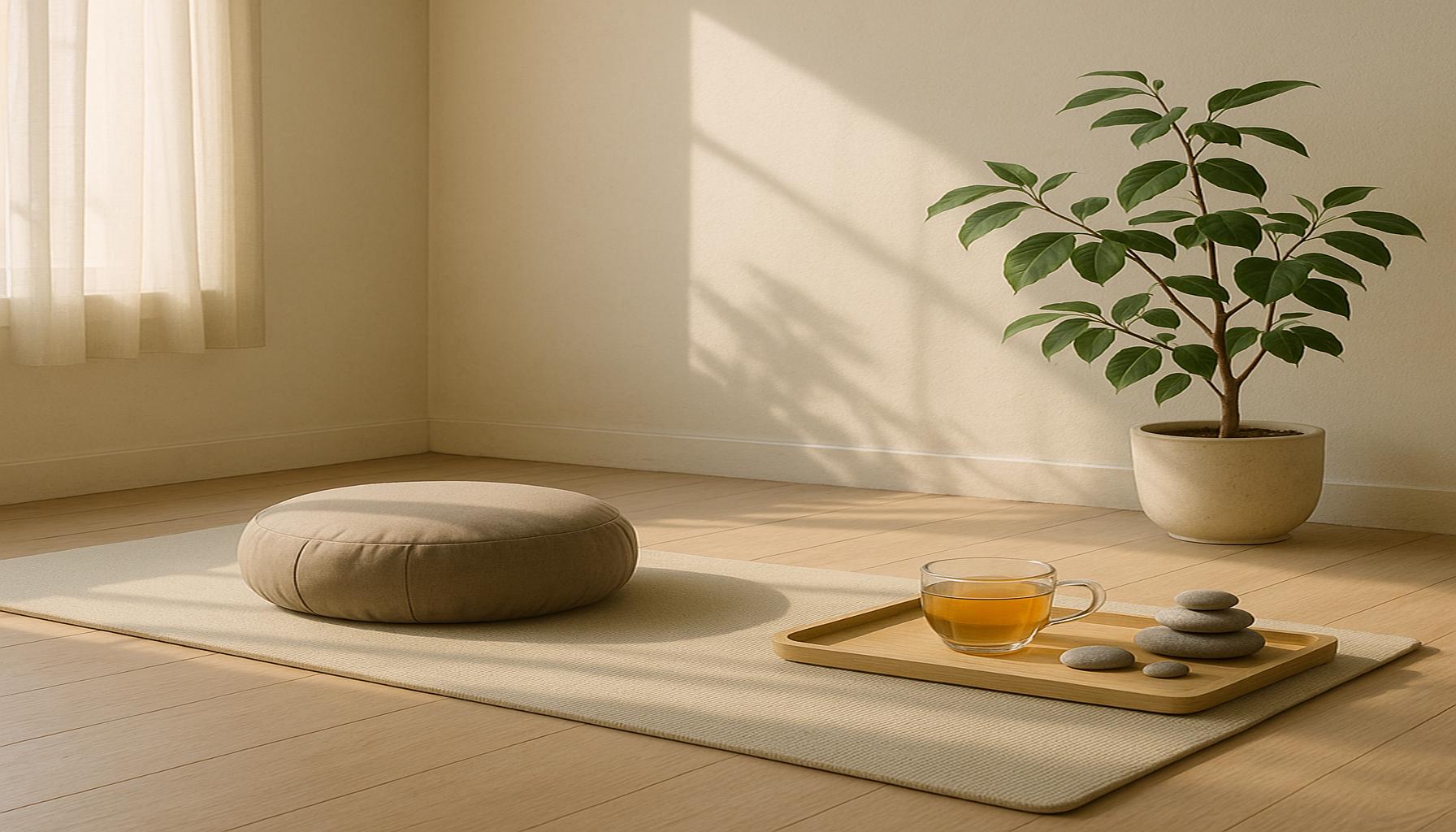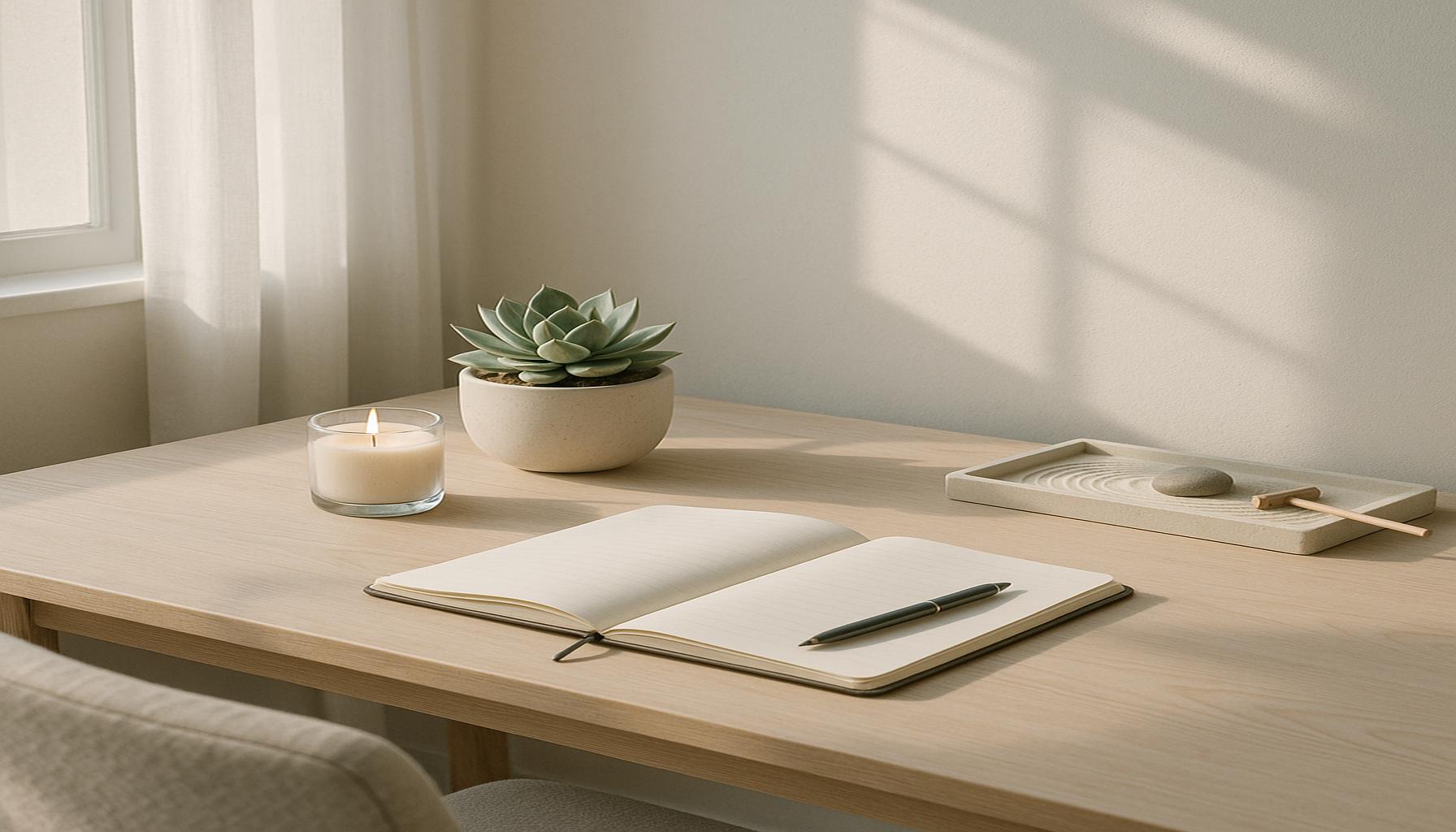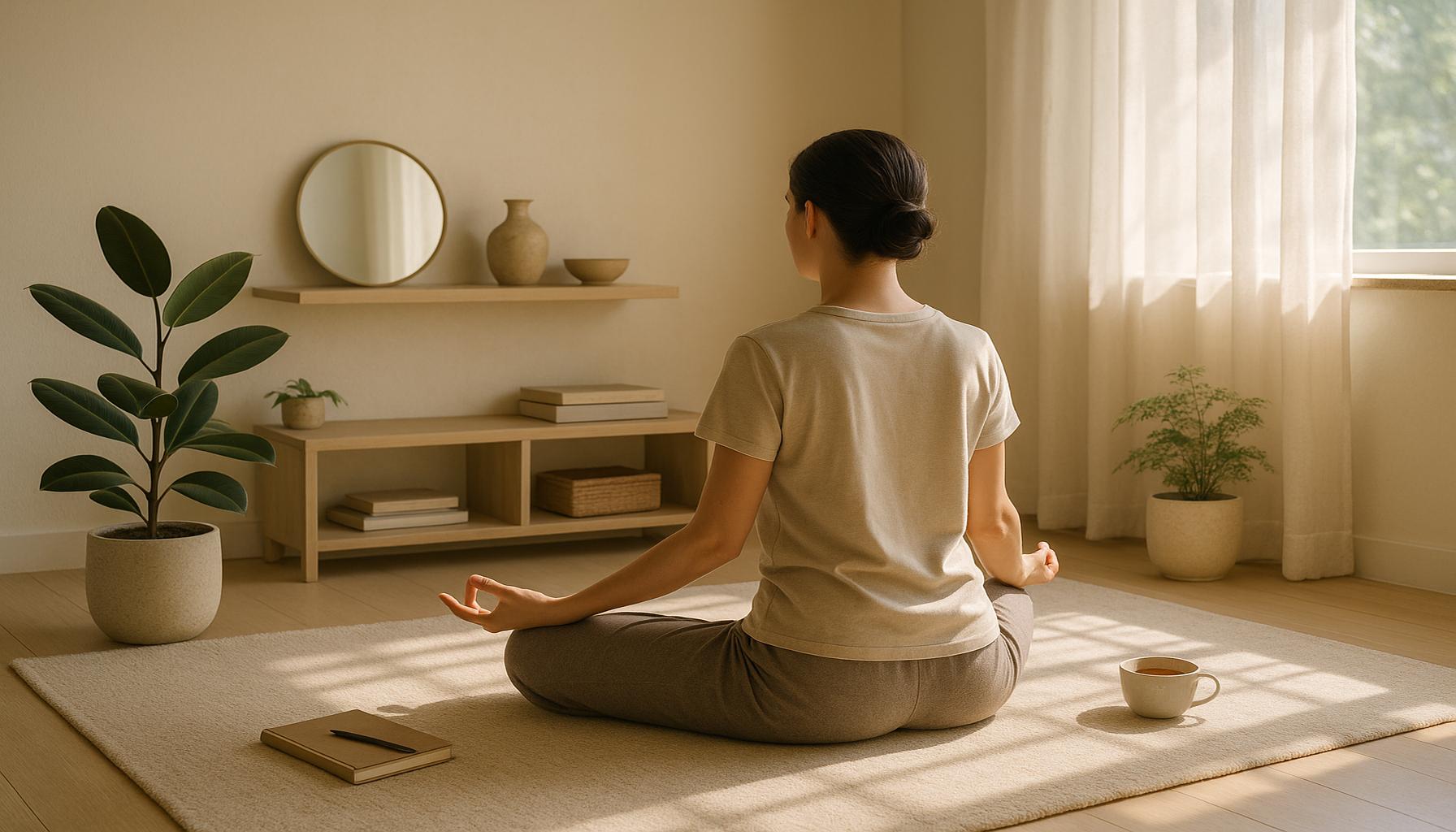Mindfulness in Daily Life: Techniques for Integrating Minimalist Practices and Self-Care
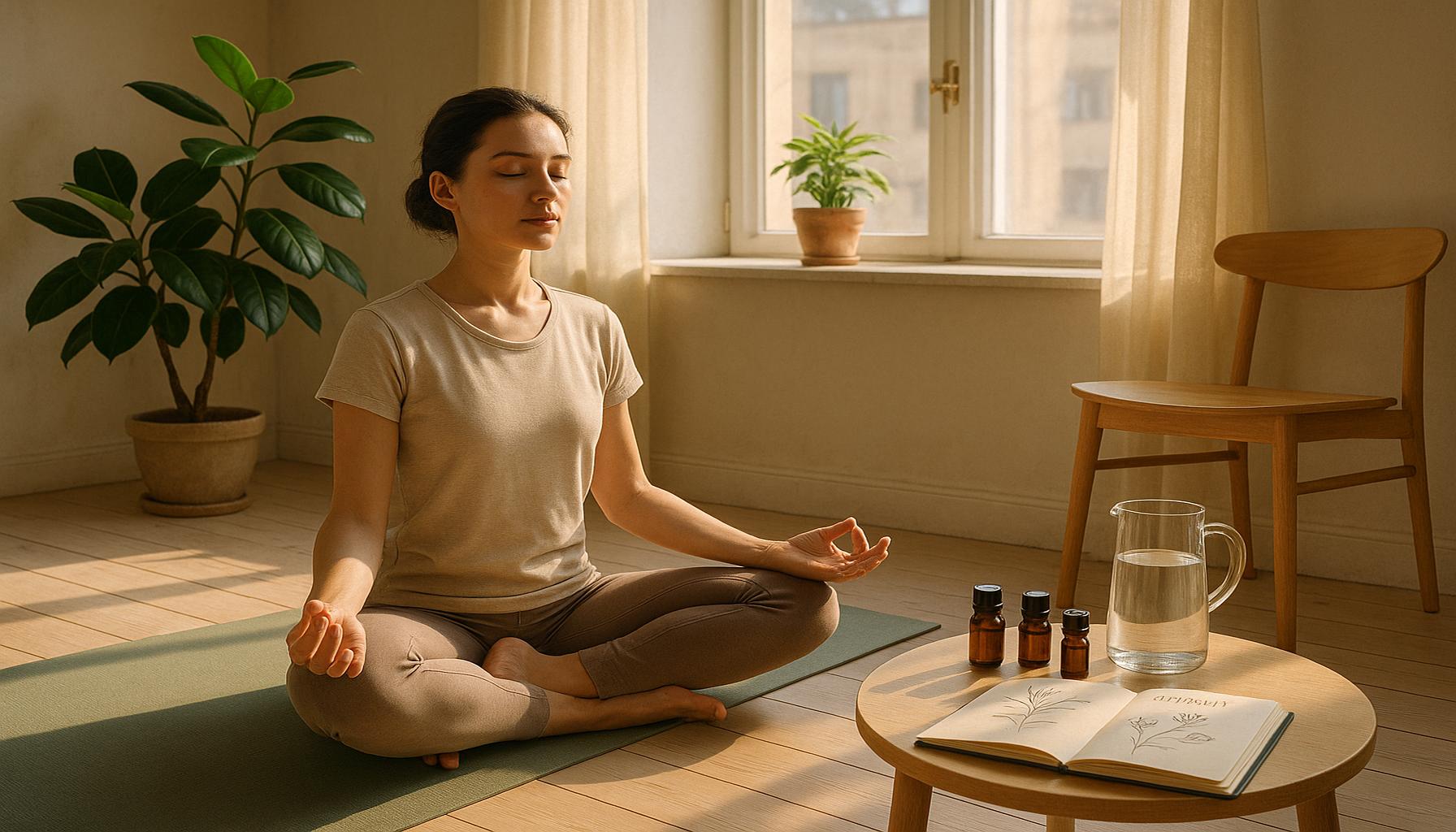
Cultivating Awareness Through Mindfulness
In today’s fast-paced world, integrating mindfulness into daily life can seem daunting. However, it is essential for cultivating a sense of peace and clarity in an age where distractions are inescapable. By embracing minimalist practices and self-care routines, you can transform your everyday experiences into moments of profound awareness. Understanding mindfulness can lead to a deeper connection with your surroundings and a greater appreciation for life’s simple joys.
Mindfulness is more than just a buzzword; it is a transformative practice that involves being present in the moment without judgment. To help you get started, consider these practical approaches:
- Breathing exercises: Engaging in simple techniques like deep breathing can ground you instantly. For instance, try the 4-7-8 technique, where you inhale for four seconds, hold your breath for seven seconds, and exhale for eight. This helps lower heart rates and reduces anxiety, helping you reconnect with the present moment.
- Decluttering your space: A minimalist environment can significantly reduce distractions, promoting focus and tranquility. Organizing your home can be a great first step. For example, the KonMari Method encourages you to keep only those items that “spark joy,” which can lead to a more peaceful living space and mind.
- Daily reflection: Taking a few moments for journaling or meditation can enhance self-awareness. Start by setting aside just five minutes at the end of each day to reflect on your experiences, which can help foster a sense of gratitude and closure.
Integrating these methods into your routine not only fosters mindfulness but also promotes overall well-being. Research has demonstrated that mindfulness practices can lead to:
- Reduced stress levels, as consistent mindfulness practice lowers cortisol levels, the hormone associated with stress.
- Improved emotional regulation, allowing individuals to respond to challenges more thoughtfully and with greater resilience.
- Enhanced creativity and problem-solving skills, as mindfulness can lead to increased divergent thinking, making it easier to generate new ideas and solutions.
Incorporating these techniques can offer a refreshing perspective on life. For example, consider how a simple walk outside can become a mindfulness practice. By concentrating on your surroundings—the sound of leaves rustling or the feeling of grass underfoot—you become more attuned to your environment. As you delve deeper into this practice, you may discover that mindfulness paves the way for a more intentional and fulfilling existence. Exploring this transformative journey can open your mind to not just accepting the present, but finding beauty and meaning in every moment.
DIVE DEEPER: Click here to discover more
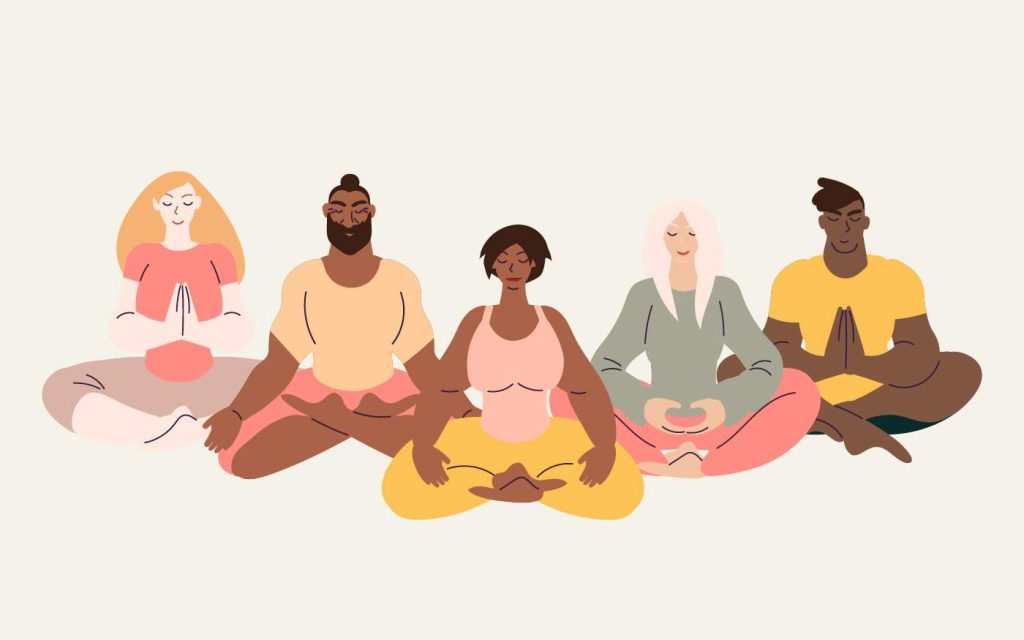
The Power of Minimalism in Finding Mental Clarity
In a world where consumerism and digital distractions reign, minimalism emerges as a refreshing antidote. More than just a design trend, it embodies a lifestyle choice that promotes mindfulness and intentional living. By paring down your material possessions and simplifying your daily routines, you can create not only a calmer space but also a mind less clouded by chaos. Embracing minimalism encourages you to ask pivotal questions about what you truly need versus what is superfluous, leading to enhanced overall well-being.
Many people have discovered that the act of decluttering goes beyond physical spaces, sparking a transformative journey toward a more centered existence. To effectively integrate minimalism into your mindfulness practice, here are some essential strategies to consider:
- One-in, one-out rule: This principle is a powerful way to maintain a minimalist lifestyle. For every new item you introduce into your home, make it a habit to part with something else. This practice not only keeps your environment tidy but encourages conscious consumption. For example, if you purchase a new sweater, consider donating an older piece from your closet. This simple act creates a balanced space while prompting you to evaluate your purchases and ensuring they serve a real purpose in your life.
- Digital decluttering: The digital landscape can often feel even more overwhelming than our physical surroundings. Allocate some time each month to organize your digital life—delete unused apps, unsubscribe from unnecessary newsletters, and limit your social media intake. By streamlining your online presence, you cultivate a serene digital ecosystem that complements your mindfulness journey. Apps like ‘Unroll.me’ can help you manage email subscriptions efficiently, while tools like ‘Forest’ assist in focusing on your tasks.
- Simplifying routines: Our daily routines often become overloaded with choices, leading to decision fatigue. Streamline such processes by adopting approaches like meal prepping or crafting a capsule wardrobe. For instance, if you choose a few versatile clothing items that can be mixed and matched, you mitigate the stress of daily outfit decisions. This approach frees up cognitive energy for more enriching and meaningful experiences, allowing for greater presence in day-to-day life.
Research corroborates that maintaining a minimalist lifestyle can yield significant benefits:
- Improved focus: Clutter can be visually distracting and mentally overwhelming. By fostering an uncluttered environment, you pave the way for heightened concentration and productivity in both personal and professional arenas.
- Increased satisfaction: Individuals who prioritize experiences over material possessions often experience a deeper sense of happiness and contentment. The transition from consumerism to valuing meaningful interactions can shift your perspective on fulfillment profoundly.
- Greater resilience: Minimalism instills adaptability as you learn to discern what is genuinely essential. This mindset shift can equip you to navigate life’s inevitable challenges with a lighter emotional and psychological load.
For a tangible application of these principles, consider the practice of mindful eating. When you sit down for a meal, take the opportunity to appreciate each bite. Eliminate distractions like phones or television, and focus on flavors, textures, and the nourishment food provides. This practice not only deepens your relationship with food but amplifies feelings of gratitude and satisfaction in life’s simpler pleasures. By harmonizing mindfulness with minimalism, you can cultivate a profound appreciation for the present moment, enhancing your experience of life’s richness. In doing so, you not only declutter your surroundings but also simplify your mind, fostering a more balanced and fulfilling existence.
| Technique | Description |
|---|---|
| Mindful Breathing | Focuses on your breath to anchor you in the present moment, reducing stress and promoting calm. |
| Decluttering Rituals | Systematic removal of unnecessary items to create a serene environment conducive for self-care practices. |
| Gratitude Journaling | Writing down what you are grateful for each day can enhance positivity and overall well-being. |
| Nature Walks | Being in nature helps ground your thoughts, enhances mindfulness, and encourages physical activity. |
Integrating these techniques into your daily routine fosters a greater sense of mindfulness that aligns seamlessly with minimalist practices. Mindful breathing, for instance, allows for a moment of pause in our fast-paced lives, helping to center the mind and reduce anxiety. Decluttering rituals, on the other hand, not only serve to create a physical space free from chaos but also contribute to a mental landscape that nurtures productive thought and clarity. Gratitude journaling is another enriching practice; it has been shown to boost overall happiness and satisfaction, making it a perfect complement to self-care habits. Meanwhile, embracing nature through walks encourages both physical wellness and psychological balance, reiterating the importance of nurturing one’s relationship with the environment.Adopting these approaches promotes an intentional lifestyle that can greatly enhance your well-being. In turn, this empowers not just the individual but encourages a ripple effect on the community, inspiring others to explore their own mindfulness journey. Each practice aligns with the core principles of simplicity and self-care, serving as a cornerstone in the quest for a more balanced life.
DISCOVER MORE: Click here to learn about the benefits of decluttering
Embracing Self-Care Through Mindful Minimalism
As we explore the principles of mindfulness intertwined with minimalism, it becomes evident that self-care is a vital pillar in this journey. The essence of self-care goes beyond merely pampering oneself; it encompasses an awareness of your mental, emotional, and physical state, ensuring that you cultivate a life of restorative practices. Integrating minimalism into your self-care routine can enhance not only your well-being but also your overall quality of life.
One of the most effective ways to incorporate self-care within a minimalist framework is through creating a self-care toolkit. This toolkit, while personal to everyone, should ideally comprise a limited number of items that nurture your mind and body. Whether it’s a good book, essential oils for aromatherapy, calming teas, or a journal, keeping your toolkit minimalist ensures that you are not overwhelmed with options; instead, each object becomes a cherished tool that facilitates self-discovery and healing. This focused approach allows for a deeper connection and appreciation of what truly brings you peace and joy.
Another essential aspect of self-care through mindfulness is time management. By simplifying your schedule, you create valuable space for moments of relaxation and introspection. Implementing techniques such as time blocking can optimize your day; dedicate specific slots for self-care activities, unhurried meals, or even mindfulness practices like meditation or yoga. Rather than feasting on hurried routines, give yourself room to breathe, and engage in activities that restore your energy and focus.
The Practice of Mindful Breathing
Integrating self-care and mindfulness on a daily basis can further be achieved through the practice of mindful breathing. This technique invites you to focus solely on your breath, promoting relaxation and a sense of presence. You can practice this anywhere—at home, during a break at work, or even while commuting. Start by taking deep, intentional breaths, inhaling for a count of four, holding for four, and exhaling for another four. This exercise can be a form of meditation that calms the mind and centers your thoughts, counteracting the distractions of daily life.
Adopting a Routine of Gratitude
Another compelling way to enhance mindfulness within minimalism is by cultivating a routine of gratitude journaling. Daily reflections on what you appreciate can foster a positive mindset and shift your focus from what is lacking in your life to an acknowledgment of what truly matters. Consider setting aside a few moments each evening to jot down three things you’re grateful for. This small, yet powerful practice not only brings clarity to your insights but also reinforces the minimalist mindset of valuing experiences over possessions.
Creating Dedicated Spaces
Finally, designing dedicated spaces in your home can significantly enhance your self-care practices. Whether it’s a corner for meditation, reading, or practicing yoga, having a specific area solely for self-care elevates the experience. Keep this space minimalistic—free from distractions and clutter—to allow for an environment that truly supports relaxation and mindfulness. Simple elements like plants, natural light, and calming colors can enhance your atmosphere, making it a sanctuary for rejuvenation.
By recognizing the intricate connection between minimalism and self-care, you can embrace a fulfilling lifestyle that promotes mindfulness throughout your daily existence. This harmonious balance will not only simplify your life but also enrich each moment, leading to a more intentional and thoughtful way of living.
DIVE DEEPER: Click here to discover how to boost your productivity
Conclusion: A Mindful Path to Minimalist Living
In an age characterized by constant stimuli and overwhelming choices, the integration of mindfulness with minimalist practices emerges as a powerful antidote for promoting well-being and clarity. By embracing the principles outlined in this article, you’ve taken the first steps towards transforming your daily life into one filled with intentionality and peace. The essence of this journey is rooted in self-awareness—acknowledging your needs and honoring them through simple, yet effective techniques.
By creating a self-care toolkit, managing your time wisely, practicing mindful breathing, cultivating a routine of gratitude, and designing dedicated spaces for tranquility, you pave the way to a more fulfilling existence. Each conscious choice contributes to a lifestyle that cherishes quality over quantity, allowing you to focus on what truly matters: your mental and emotional health.
As you continue to integrate these practices into your life, consider the ripple effects they can have on your relationships, work, and overall perspective. Embracing mindfulness with minimalism not only enhances your self-care routines but also aligns your life with deeper values focused on presence and authenticity. Strive to remain curious, explore new dimensions of your journey, and share your insights with others seeking a similar path. Ultimately, creating a mindful, minimalist lifestyle is a continuous process—a chance to rediscover the beauty in simplicity and the joy in every breath.
